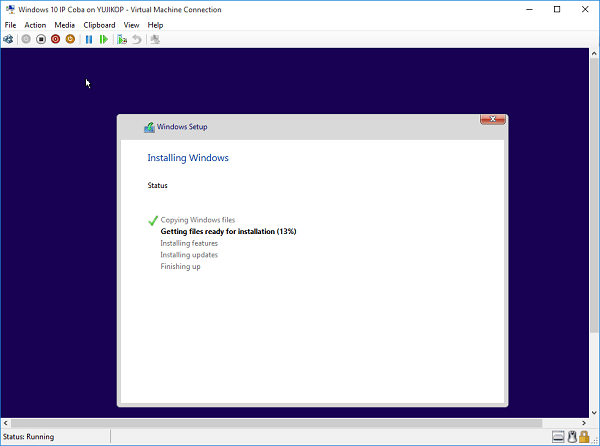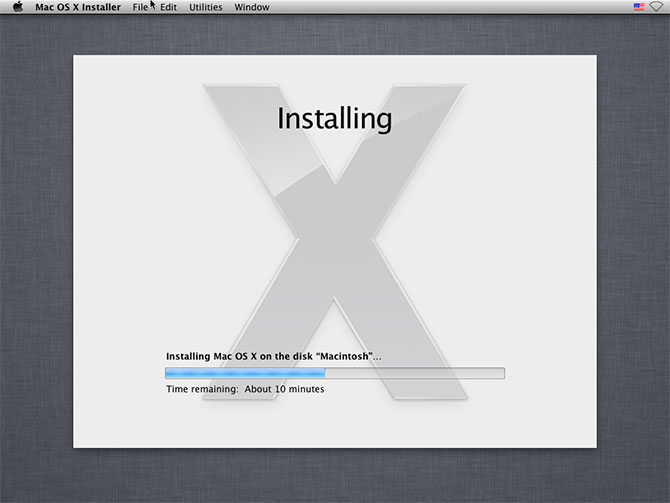Install Chrome Os On Hyper-v
Posted : admin On 24.08.2019Chrome OS on a Chrome device and CloudReady in VirtualBox are a very different experience. CloudReady is an OS based on Chromium OS open-source project. Chromium OS is to Chrome OS what Chromium is to Chrome. It’s the open-source project behind it but there are some additional features Google adds on top of it. Jun 24, 2016 How to try ChromeOS on a virtual machine before you buy a Chromebook. The picture above is Chrome OS (technically Chromium) running on top of Windows 10, and it was as easy as downloading two.
Download and install Chrome OS
The first question in your head is 'why would I want to install Chrome OS, even on my old laptop, when there are perfectly adequate awesome full-fat Linux distros to choose from?'
Good question, and the answer is not everyone wants a full-fat distro, nor can everyone use a full-fat distro. Part of the success of Chromebooks – and they are successful with 5.7 million Chromebooks being sold in 2014 and 7.3 million predicted for 2015 – is their cut-down, lightweight Gentoo-based OS.
If you want to give someone easy, no fuss access to Google services it should be a tempting choice. The good news is that it's easy to install Chromium OS, which is the open source project name for the official Google Chrome OS, which is only available through officially licenced Chromebook PCs.
While it looks superficially different with a blue-theme running through it, Chromium OS taps into the same Google Accounts and services and it offers the same advantages of automatically picking up your plugins and the rest, which are stored in the Google cloud.
Built on Gentoo, it is Linux based and so has all the advantages of the Linux kernel, but keep in mind it was only rolled out in late 2009, so if you're planning on trying it on hardware older than that you might not have as much luck.
Having said that we tried it on a standard Lenovo X200 laptop from 2008 and everything worked without a hitch. A general rule of thumb is: any standard Intel hardware should work without a hitch.
One thing we do know is that non-Intel wireless adaptors do cause issues, we'll go into this in more detail in a moment.
A number of sites have maintained builds of Chromium OS. It's unlikely you'll want to build it yourself from source, so there are versions ready for VirtualBox and for running and installing off a USB drive. We're using this Chrome OS build, which is kept current.
Another popular build is over at the Hexxeh website . This doesn't appear to be maintained as of April 2013, but it will still work.
Take Chromium OS for a spin
You've got an array of options for trying Chromium OS. The easiest of them is to download an image, write it to a USB drive or SD card and boot this from your laptop or PC.
There are live disc versions too, but with writable media you're able to save your settings and carry the OS around with you.
It's not advertised within the OS but there's a command which easily copies the OS partitions to an internal hard drive.
This does wipe all existing data but with cheap SSDs it's not beyond the realms of possibility you could buy a dedicated drive.
We did try dual-booting Chromium with Linux Mint, but it seems Chromium saw this as a repair state and wouldn't play ball.
Let us know if you have more luck, as it seems a relatively straight-forward process of recreating the two ROOT-A and STATE partitions, dd over these from the USB drive and update Grub.
- Read more: The best Chrome VPN extensions
Google’s Chromebooks run Chrome OS, a lightweight operating system based on Linux that provides you with a full Chrome browser and a basic desktop environment. Before buying a Chromebook, you may want to play with Chrome OS in a virtual machine in a window on your desktop.
What You’re Getting
RELATED:The Best Chromebooks You Can Buy, 2017 Edition
Here’s the thing: You can’t get an official version of Chrome OS without buying a Chromebook. Google doesn’t offer a version of Chrome OS you can install on existing hardware, whether in a virtual machine or on a full laptop or desktop PC. You can only get the full version of Chrome OS on a Chromebook.
However, Chrome OS—like the Chrome browser itself—is based on an open-source project. The open-source project is named Chromium OS. It includes most of Chrome OS, aside from some extra features Google adds later, including support for Android apps.
We suggest using Neverware CloudReady for this. Neverware takes the Chromium OS code and modifies it to work on existing PC hardware. They then add additional enterprise management features and sell their solution to schools and businesses who want to run Chrome OS on existing PCs.

However, Neverware offers a free version for home use and free virtual machines for VirtualBox and VMware. This software is based on Chromium OS and is almost exactly identical to Chrome OS. It’s just missing a few bells and whistles you can only get on a Chromebook.
How to Get the Virtual Machine
RELATED:Beginner Geek: How to Create and Use Virtual Machines
Chrome Os
First, you’ll need a virtual machine application installed. We suggest the free VirtualBox software, but you can also use a VMware product like VMware Workstation if you prefer that or already have it installed.
Once you’ve installed a virtual machine program, head to Neverware’s CloudReady virtual machine images page. Click the appropriate link to download the virtual machine image for either VirtualBox or VMware, whichever you have installed.
Next, import the downloaded virtual machine appliance into your virtual machine program of choice. In VirtualBox, click File > Import Appliance and browse to the virtual machine file you just downloaded, which will have the .OVF file extension.
VirtualBox or VMware will set up the virtual machine’s virtual hardware according to the specifications in the file. You don’t have to configure anything or even install the operating system—it’s already installed. Just click the “Import” button to continue.
To launch the CloudReady virtual machine, just double-click it in your virtual machine library.
Using Chromium OS
Despite the Neverware CloudReady branding, the words “Chromium OS” will appear throughout the operating system, indicating that you’re primarily just using the open source build of Chrome OS.
How To Install Chrome Os On Hyper-v
Everything will work fairly similarly. You’ll see the usual Chrome OS setup screen, although it will be branded with a “CloudReady” logo.
When you boot up the virtual machine for the first time, it will offer to automatically download the Adobe Flash plug-in for you. This is something that’s normally included on Chrome OS, but can’t be included here. On a Chromebook, you won’t see this window. However, this wizard still helps you install it in a single click.
You’ll sign into the operating system with a Google account, just like how you’d normally use a Chromebook. In fact, when you do, you’ll receive an email alert from Google that there was a new sign-in from Chrome OS.
You can click around and use the environment like you’d use a normal Chromebook. You’ll find the usual things: A desktop environment with a taskbar, tray, and launcher, apps like the Files app, and of course the Chrome browser itself.
Some features will not be present. You won’t find any support for Android apps, a feature that’s been appearing on more (but not all) Chromebooks lately. You may encounter issues with multimedia or DRM-restricted websites.
The operating system won’t receive updates from Google, but it will automatically update to new versions of CloudReady released by Neverware. These tend to lag behind new versions of Chrome OS released by Google itself, as Neverware has to modify them once they’re released.
When you boot up the virtual machine in the future, you’ll see the usual Chrome OS sign-in screen where you can enter your password, sign in with a new user account, or sign in as a guest. In guest mode, your Chromebook will give the guest a blank slate and automatically erase their browsing data when they sign out.
While this is a preview of the experience of using Chrome OS, it can’t substitute for the real thing. Not only is it missing a few features, but the performance of Chrome OS on real hardware should be much better than in a virtual machine.

What’s more, the experience of using Chrome OS inside a virtual machine is kind of missing the point. Chrome OS is supposed to be simple and lightweight, getting out of your way and giving you an easy-to-use laptop that doesn’t need system maintenance or software installation, something you can easily use and hand to guests with its guest mode.
RELATED:How to Install Android in VirtualBox
You can’t actually have the whole Chrome OS experience without trying a Chromebook, just like you can’t have the experience of using an Android phone by installing Android in a virtual machine on your PC. You may want to visit a local electronics store and play with a Chromebook in person if you’re still curious. That will let you experiment with those Android apps on Chrome OS, too.
READ NEXT- › How to Enable Google Chrome’s New Extensions Menu
- › How to Stop Spammers From Attacking Your Google Calendar
- › How to Power Off Your Samsung Galaxy Note 10 or 10 Plus
- › How to Switch from a Windows PC to a Mac
- › Want to Survive Ransomware? Here’s How to Protect Your PC
